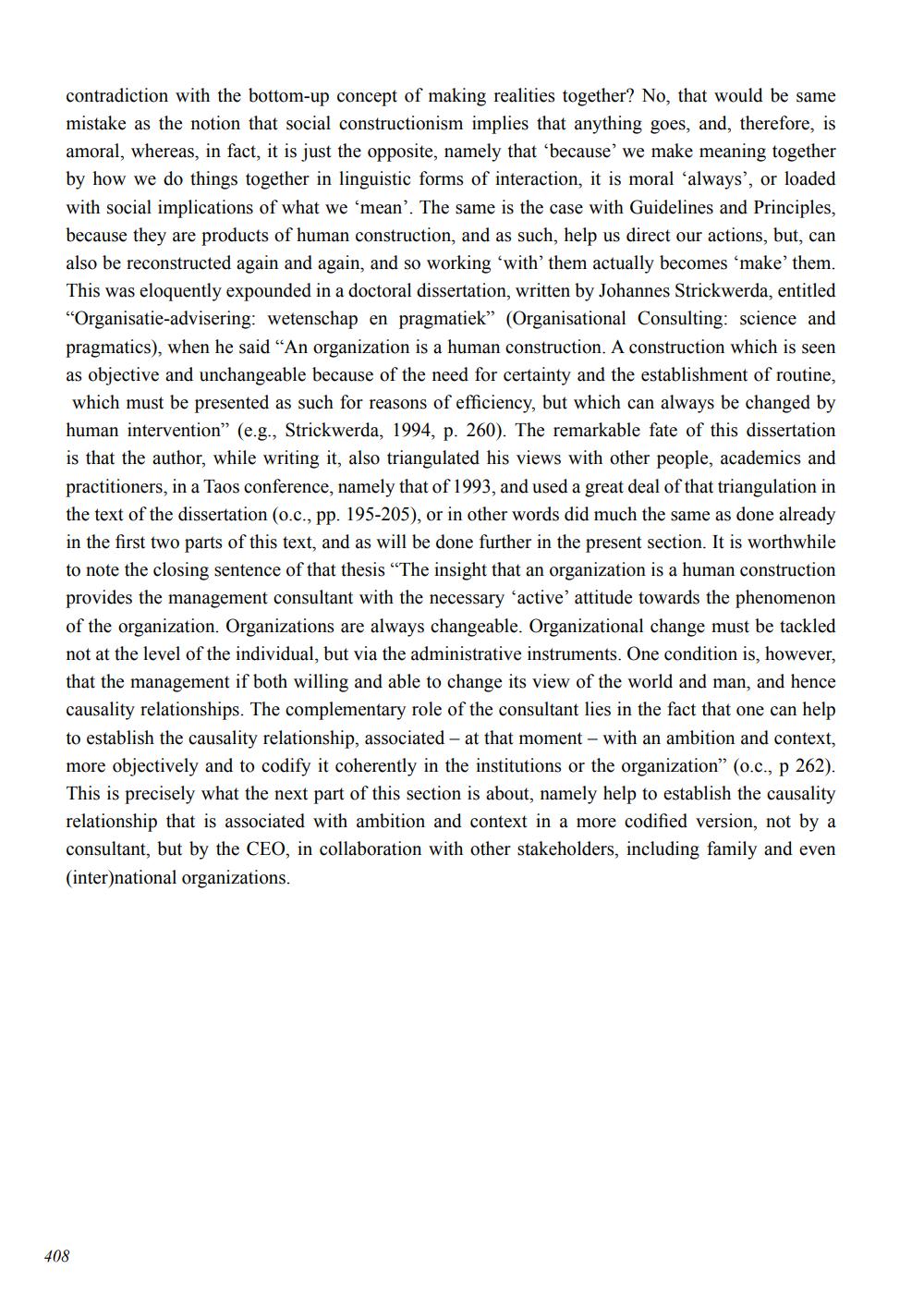________________
contradiction with the bottom-up concept of making realities together? No, that would be same mistake as the notion that social constructionism implies that anything goes, and, therefore, is amoral, whereas, in fact, it is just the opposite, namely that 'because we make meaning together by how we do things together in linguistic forms of interaction, it is moral 'always', or loaded with social implications of what we ‘mean’. The same is the case with Guidelines and Principles, because they are products of human construction, and as such, help us direct our actions, but, can also be reconstructed again and again, and so working with them actually becomes make them. This was eloquently expounded in a doctoral dissertation, written by Johannes Strickwerda, entitled “Organisatie-advisering: wetenschap en pragmatiek” (Organisational Consulting: science and pragmatics), when he said "An organization is a human construction. A construction which is seen as objective and unchangeable because of the need for certainty and the establishment of routine, which must be presented as such for reasons of efficiency, but which can always be changed by human intervention” (e.g., Strickwerda, 1994, p. 260). The remarkable fate of this dissertation is that the author, while writing it, also triangulated his views with other people, academics and practitioners, in a Taos conference, namely that of 1993, and used a great deal of that triangulation in the text of the dissertation (o.c., pp. 195-205), or in other words did much the same as done already in the first two parts of this text, and as will be done further in the present section. It is worthwhile to note the closing sentence of that thesis "The insight that an organization is a human construction provides the management consultant with the necessary 'active' attitude towards the phenomenon of the organization. Organizations are always changeable. Organizational change must be tackled not at the level of the individual, but via the administrative instruments. One condition is, however, that the management if both willing and able to change its view of the world and man, and hence causality relationships. The complementary role of the consultant lies in the fact that one can help to establish the causality relationship, associated at that moment - with an ambition and context, more objectively and to codify it coherently in the institutions or the organization” (o.c., p 262). This is precisely what the next part of this section is about, namely help to establish the causality relationship that is associated with ambition and context in a more codified version, not by a consultant, but by the CEO, in collaboration with other stakeholders, including family and even (inter)national organizations.
408




